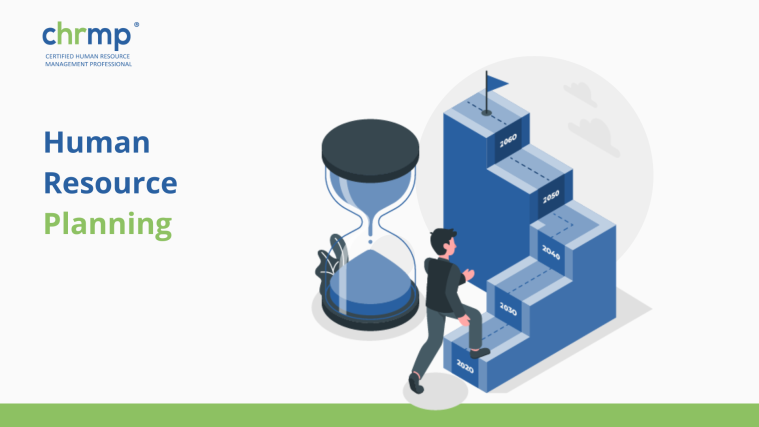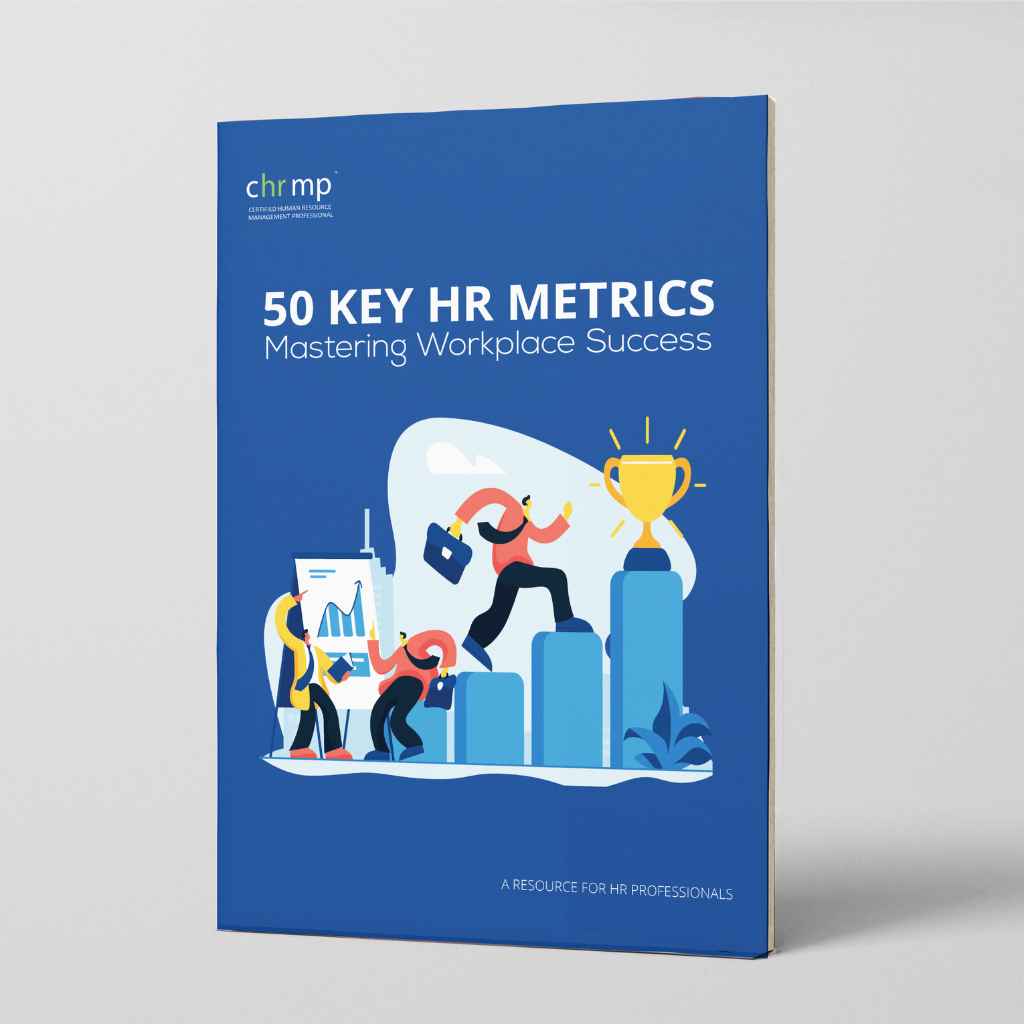If your company’s performance needs improvement and staying ahead of the competition is beginning to feel like a sticky wicket, you’ve come to the right place.
Human Resource Planning is all about ensuring your organisation has the right people with the right skills in right roles at right time & their personal goals are aligned correctly with those of the organisation.
If you’re always ready to take on new challenges and opportunities, that’s the first step in a proactive approach to managing your workforce.
In this blog, we’ll explore the key principles of Human Resource Planning, best practices, and practical tips for implementation.
Let’s get started!
What is Human Resource Planning?
Human Resource Planning is the process of identifying and predicting the workforce needs of an organisation in terms of quantity and quality, to achieve organisational goals.
The analysation of the current workforce, anticipating future demand and supply of employees and developing strategies to ensure that the organisation has the right people in the right roles with requisite academic and professional qualifications.
HRP considers factors such as employee turnover, employee engagement, compensation, retirements, promotions, and changes in business strategy and aims to align the organisation’s goals and objectives with that of the workforce.
HRP’s final objective is to ensure that the organisation possesses human capital whose performance and productivity will help it to achieve its business objectives in a sustainable and profitable manner.
Why is Human Resource Planning Important?
Human Resource Planning (HRP) is critical to the success of any organisation for several reasons:
- Ensuring Adequate Staffing: Figuring out the right number of employees with the necessary skills to meet the business needs is the prime key to success. By forecasting workforce requirements, organisations can anticipate future staffing needs. Avoiding overstaffing or understaffing is critical to workforce management.
- Facilitating Change Management: HRP enables organisations to prepare for and manage changes in the workforce. Identification of areas where skill gaps exist or where new roles may be required and enable organisations to proactively plan for workforce changes, such as reorganisations, mergers, or acquisitions.
- Increasing Efficiency and Productivity: HRP enables organisations to improve their efficiency and productivity by ensuring that they have a workforce with the right skills and abilities. By providing employees with the necessary training and development opportunities, organisations can improve their employees’ job performance and work satisfaction, which in turn leads to increased productivity, profitability, customer satisfaction and overall better business results.
- Reducing Costs: HRP enables organisations to reduce costs associated with staffing, such as recruitment and training costs. It also helps to avoid costs associated with understaffing and lost revenue or reduced customer satisfaction.
- Promoting Diversity and Inclusion: HRP helps organisations promote diversity and inclusion by ensuring that all the communities in which they operate are represented in the workforce of the organisation. By proactively recruiting and developing a diverse workforce, organisations can improve employee engagement and build a more inclusive work culture while at the same time avoiding any particular skilled section in the community.
In short, Human Resource Planning is essential for organisations looking to achieve their strategic objectives and stay competitive in today’s fast-paced business scenario.
Top 3 Challenges in Human Resource Planning
Human resource planning involves forecasting an organization’s future HR needs and developing strategies to meet those needs. Here are three common challenges in human resource planning:
- Uncertain external factors: External factors such as economic conditions, industry trends, and technological advancements can significantly impact human resource planning. Changes in the business environment can lead to unpredictable shifts in workforce demand and skill requirements. HR professionals must navigate these uncertainties and anticipate potential changes to ensure the organization has the right talent in place at the right time.
- Talent acquisition and retention: Finding and attracting skilled and qualified employees can be a challenge, particularly in highly competitive industries or during periods of talent shortages. HR planning must address strategies for effective recruitment, including sourcing channels, employer branding, and candidate evaluation. Retaining top talent is also crucial, as losing key employees can disrupt operations and lead to additional recruitment and training costs.
- Skill gaps and workforce development: Identifying and addressing skill gaps within the workforce is an ongoing challenge for HR planning. Organizations need to analyze current and future skill requirements and assess the capabilities of their employees. Developing effective training and development programs, implementing succession planning initiatives, and fostering a learning culture are essential for addressing skill gaps and ensuring a capable and adaptable workforce.
Overall, successful human resource planning requires a proactive approach, adaptability to external changes, strategic talent management, and continuous evaluation of the organization’s workforce capabilities and needs.
The Human Resource Planning Process Explained
The Human Resource Planning (HRP) process involves several steps, like:
- Analysing the Current Workforce: This involves assessing the current workforce’s strengths and weaknesses, identifying areas where skills gaps exist, and determining which positions are critical to the organisation’s success or if there is a need to cut down or there’s a need for the creation of new roles.
- Forecasting Future Workforce Needs: This step involves analysing internal and external factors that could affect the organisation’s future workforce needs, such as changes in business strategy, industry trends, and demographic shifts due to wars or other reasons.
- Identifying HR Strategies and Actions: Based on workforce analysis and data-driven forecasting, HR strategies and actions are planned to address workforce gaps and needs. These may include recruitment and selection strategies, training and development programs, succession planning, retention and lowering turnover strategies.
- Implementing HR Strategies: HR strategies and actions previously planned have to be put into practice to get productive results. This may involve recruiting & hiring new employees, providing training and development opportunities, or implementing retention and lower turnover strategies.
- Monitoring and Evaluating: Monitoring and evaluating the effectiveness of the HR strategies and actions implemented is the final stage. This may involve tracking employee performance, measuring the impact of training and development programs, and assessing the success of retention strategies.
By following this process, organisations can ensure that they have the right people in the right roles and that the objective of the workforce is aligned correctly with the objectives of the organisation.
3 Major Types of Human Resource Planning
Human Resource Planning (HRP) is a critical process that helps organisations ensure that they have the right people with the right skills in the right roles at the right time.
There are three major types of HRP, each with its own focus and objectives:
1. Strategic Human Resource Planning
This type of HRP involves analysing the organisation’s long-term goals and developing workforce strategies to meet those goals.
The alignment of workforce objectives has to be in tandem with the objectives of the organisation.
Strategic HRM may involve identifying new roles and skill sets that will be required in the future, developing leadership and talent pipelines, implementing succession planning at the same time, planning appropriate compensation and retirement benefits or designing appropriate training and development programs for the existing workforce.
2. Operational Human Resource Planning
The day-to-day workforce needs, and the organisation’s operational needs have to be looked after.
It involves analysing the organisation’s current workforce requirements, such as staffing levels and skills requirements, and developing strategies to meet those requirements.
Operational HRP may involve developing recruitment and selection strategies, training and development programs, and performance management systems.
3. Succession Planning
The organisation should have a plan in place to fill critical positions when they become vacant.
It involves identifying key roles and individuals, assessing their potential and previous performance for promotion, and developing strategies to ensure that those individuals are ready to assume their new roles when the time comes and that the transition is smooth.
Succession planning may involve developing leadership and mentoring programs, providing training and development opportunities, and implementing knowledge transfer programs based on the prior performance and productivity of the concerned employees.
By incorporating these three types of HRP into their overall human capital strategy, organisations can ensure that they have the right individuals in the right roles and that their workforce is aligned with their business objectives.
7 Tips to Create Your Own Human Resource Planning Process
Creating a human resource planning process that works for your organisation can be challenging.
Here are seven tips to help you get started:
- Start with a SWOT Analysis: Conduct a SWOT (Strengths, Weaknesses, Opportunities, Threats) analysis which identifies your organisation’s internal strengths and weaknesses, as well as external opportunities and threats. Potential workforce challenges and opportunities are identified by this analysis.
- Set Realistic Goals: Set realistic goals based on your SWOT analysis, and ensure that your HR planning process is in tandem with your organisation’s overall strategic objectives.
- Involve Stakeholders: Key stakeholders have to be included, like senior leaders, managers, and employees, in the HR planning process. This will help ensure that your plan is aligned correctly with the needs of the organisation, its workforce and the stakeholders.
- Analyse Your Workforce: Analyse your current workforce to identify areas where skill gaps exist and determine the training and development programs to be run to fill the gap, also which positions are critical to the success of the organisation.
- Forecast Future Workforce Needs: The use of data analytics to forecast future workforce needs is recommended based on factors such as changes in business strategy, industry trends, and demographic shifts. Appropriate growth and development opportunities have been made available to meet those forecasts.
- Develop Strategies and Actions: Based on your analysis and forecasting, develop strategies and actions to address workforce gaps and needs. This may include recruitment and selection strategies, training and development programs, succession planning, and retention strategies.
- Monitor and Evaluate: Monitor and evaluate the effectiveness of your HR planning process regularly. This will help you identify areas for improvement and ensure that your workforce objectives remain aligned with your organisation’s strategic objectives.
By following these tips, you can develop an effective human resource planning process that meets the needs of your organisation and its workforce and enables your organisation to propel itself towards greater heights of success.
Tools Used in Human Resource Planning
Human resource planning involves the use of various tools and techniques to effectively forecast HR needs and develop strategies to meet them. Here are some commonly used tools in human resource planning:
- Workforce Analytics: Workforce analytics involves the use of data and statistical analysis to gain insights into the organization’s current and future workforce needs. It helps in identifying trends, forecasting demand, and evaluating the impact of HR decisions. Workforce analytics tools can provide valuable information on employee demographics, turnover rates, performance metrics, and skills gaps.
- HR Information Systems (HRIS): HRIS is software that assists in managing HR-related data and processes. It provides a centralized database for storing employee information, tracking performance, managing recruitment and training, and generating reports. HRIS systems automate administrative tasks, streamline workflows, and facilitate data analysis, enabling better decision-making in HR planning.
- Succession Planning Tools: Succession planning tools aid in identifying and developing potential successors for key positions within the organization. These tools assess employees’ skills, competencies, and career aspirations, helping to create talent pipelines and ensure smooth leadership transitions.
- Workforce Planning Models: Workforce planning models help in predicting future workforce needs based on factors such as business projections, growth plans, and industry trends. These models incorporate variables like attrition rates, retirement patterns, and anticipated skill requirements to estimate future staffing levels and determine the appropriate recruitment and development strategies.
- Skills Assessments: Skills assessments tools evaluate employees’ existing skills and competencies and identify areas for improvement or development. These assessments can be in the form of surveys, questionnaires, or online assessments that measure specific skills or knowledge areas.
- Scenario Planning: Scenario planning involves creating hypothetical situations or scenarios to anticipate potential changes or challenges in the workforce. By considering different scenarios, HR planners can develop contingency plans and strategies to address various outcomes.
These tools, combined with effective data analysis and strategic thinking, help HR professionals in making informed decisions, aligning HR strategies with organizational goals, and optimizing the allocation of human resources.
Frequently Asked Questions
1. What is the purpose of human resource planning?
Human resource planning purpose is to ensure that an organisation has the right people with right skills in right roles at right time. By aligning the organisation’s human capital with its strategic objectives, HR planning can help improve productivity, reduce turnover, and mitigate workforce risks.
2. What are the benefits of human resource planning?
There are several benefits of human resource planning, including:
- Improved workforce alignment with strategic objectives
- Enhanced productivity and performance
- Reduced workforce costs and risks
- Improved talent acquisition and retention
- Better workforce forecasting and planning
3. How does human resource planning differ from workforce planning?
While human resource planning focuses on the overall management of an organisation’s human capital, workforce planning is a more specific process that focuses on identifying and addressing workforce needs for a specific period. Workforce planning is typically used to determine the workforce needs for a specific project or time frame.
4. What are some challenges associated with human resource planning?
Some common challenges associated with human resource planning include:
- Uncertainty about future workforce needs
- Limited availability of data and analytics
- Difficulty predicting changes in the business environment
- Resistance to change from employees and management
- Limited resources and budget constraints
5. How often should an organisation conduct human resource planning?
The frequency of human resource planning can vary depending on the organisation’s size, industry, and business environment. However, it is generally recommended that organisations conduct HR planning on an annual basis, with regular monitoring and updates throughout the year, to ensure that the workforce remains aligned with the organisation’s strategic objectives.
Conclusion
Human Resource Planning (HRP) process is critical to your organisation’s smooth functioning and meeting its business goals.
Organisations should ensure that they have the right people with the right skills and qualifications for the right roles.
By aligning the organisation’s human capital with its strategic objectives, HRP can help improve employee productivity and performance, reduce turnover and absenteeism and mitigate workforce risks.
In this blog, we discussed the importance of HRP, the process involved, the three major types of HRP, and seven tips for creating an effective HR planning process.
By incorporating these tips into their overall human capital strategy, organisations can ensure that they have a workforce that is aligned in tandem with their business objectives and that they are better prepared to address the workforce challenges and opportunities that lie ahead.
A well-planned and well-executed HR planning process is a key driver of organisational success.


